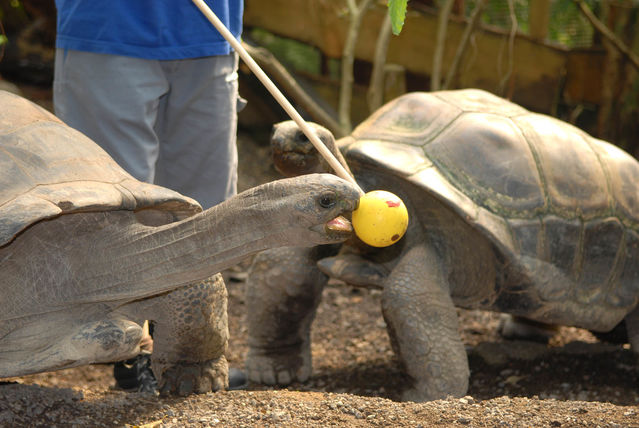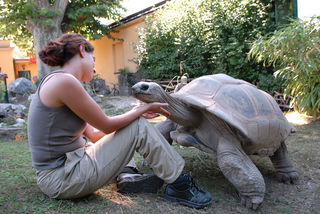Memory
Giant Turtles Have Surprisingly Strong Memories
Giant tortoises might not be fast on their feet, but they are fast learners.
Posted December 18, 2019 Reviewed by Abigail Fagan

Despite a reputation for being slow, giant tortoises from the Galapagos and Seychelles Islands demonstrate remarkable memory skills over time, according to the results of a new study. The massive reptiles are not only capable of learning new tasks quickly, but can remember their training nearly a decade later, researchers say.
Tamar Gutnick and Michael Kuba of Hebrew University in Jerusalem, Israel, and Anton Weissenbacher at Schönbrunn Zoo in Vienna trained captive Galapagos tortoises (Chelonoides nigra) and Aldabra tortoises (Aldabrachelys gigantea) to bite the end of a particular colored stick in return for a favorite food.
When tested again three months later, the tortoises recalled the task. Remarkably, some individuals even seemed to remember the task nine years after the initial training sessions, responding to the correct color.
The researchers also found that both species of giant tortoise learned the task faster when trained in a group rather than individually. “All the tortoises in our study were fast learners and those allowed to observe and interact with conspecifics [other individuals of the same species] during training learned significantly faster,” the researchers reported.
Although neither species has been described as particularly social animals, in the wild, they do gather in high densities and often sleep and graze together. Charles Darwin observed that Galapagos tortoises often travel considerable distances from sleeping areas to feeding grounds, water sources, and mud patches.

Gutnick says it was a pleasure to work with these animals, which love being pet and scratched and would sometimes push each other to compete for the researchers’ attention.
“These tortoises, some of which had been in the zoo for over 40 years, clearly responded to the animal keepers they knew,” she says. “They were curious (especially the sub-adults) and once they recognized you they came over wanting interaction.”
Giant tortoises have been unflatteringly described as “living rocks,” slow in both movement and cognitive abilities. But we are learning that these creatures can travel long distances, interact with one another and their environment, and live extremely long lives–sometimes over 100 years.
“Unfortunately, I think there are great gaps in our knowledge about cognitive abilities in most animals that are not common laboratory model animals,” says Gutnick.
“I think the main message of the paper is that these turtles have clearly been underestimated, something very common to reptiles. The results we found in the long-term memory test suggest that in some ways their memory is similar to that of mammals.”
References
Gutnick T, Weissenbacher A, and Kuba MJ. The underestimated giants: operant conditioning, visual discrimination and long-term memory in giant tortoises. Animal Cognition 13 Nov 2019. doi: 10.1007/s1007-019-01326-6.


